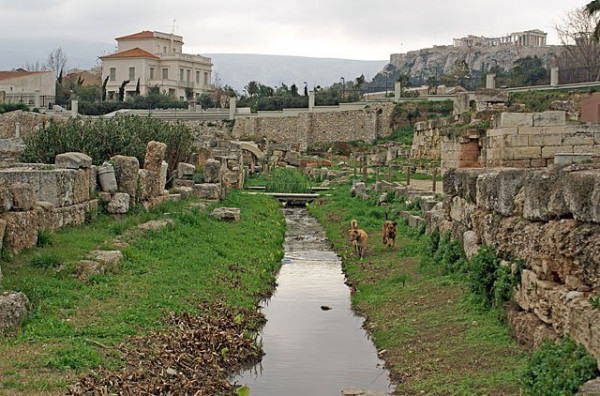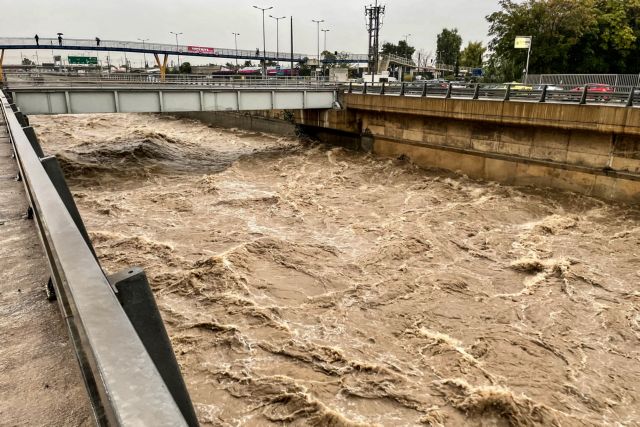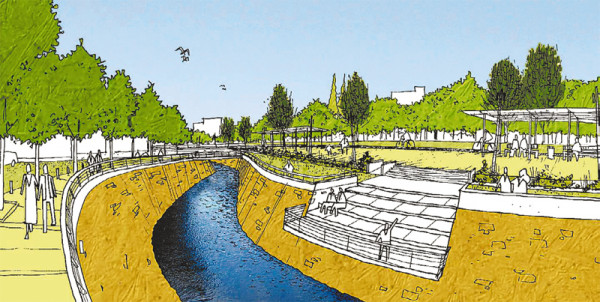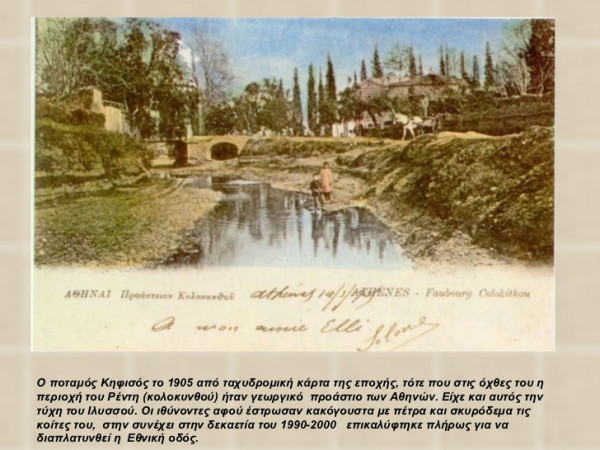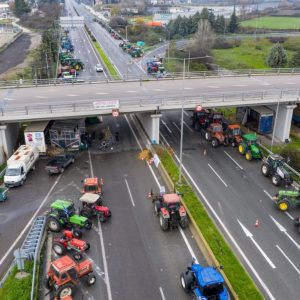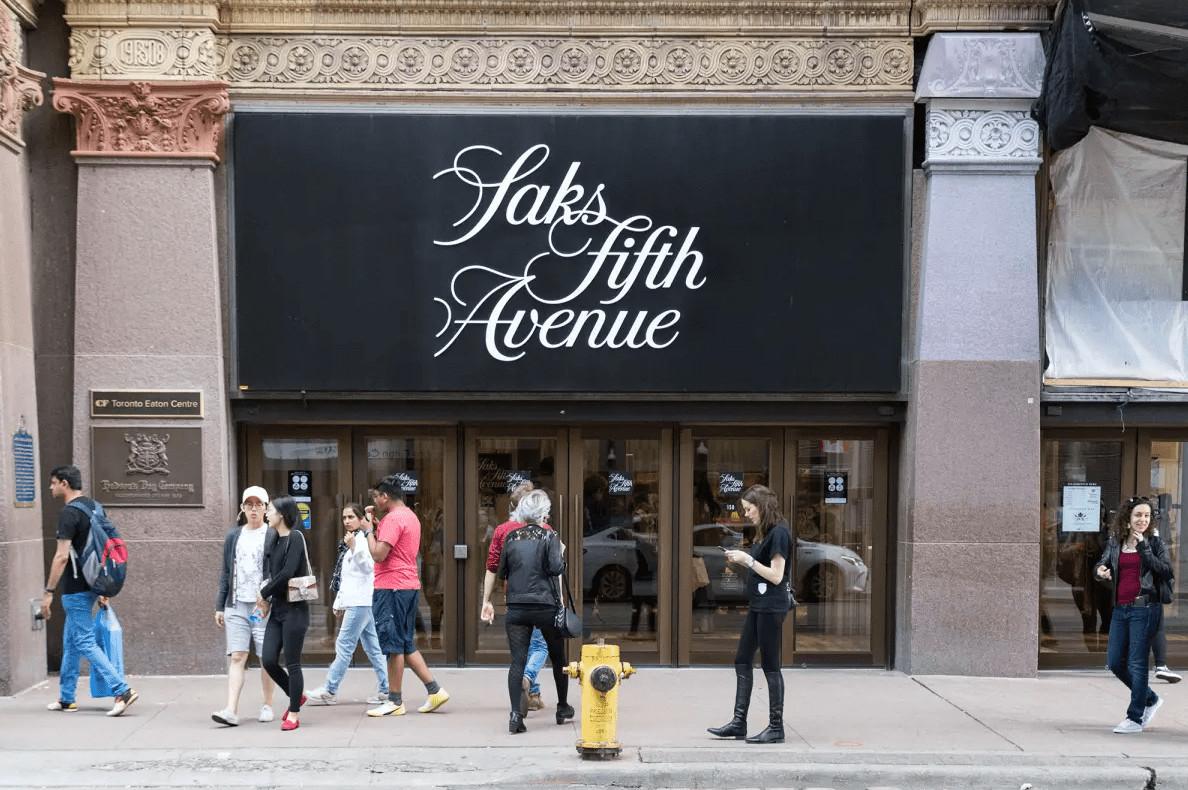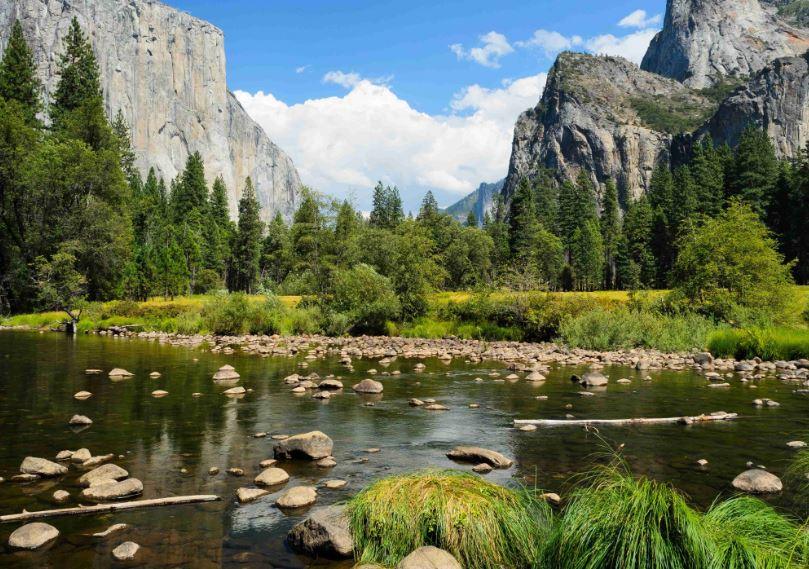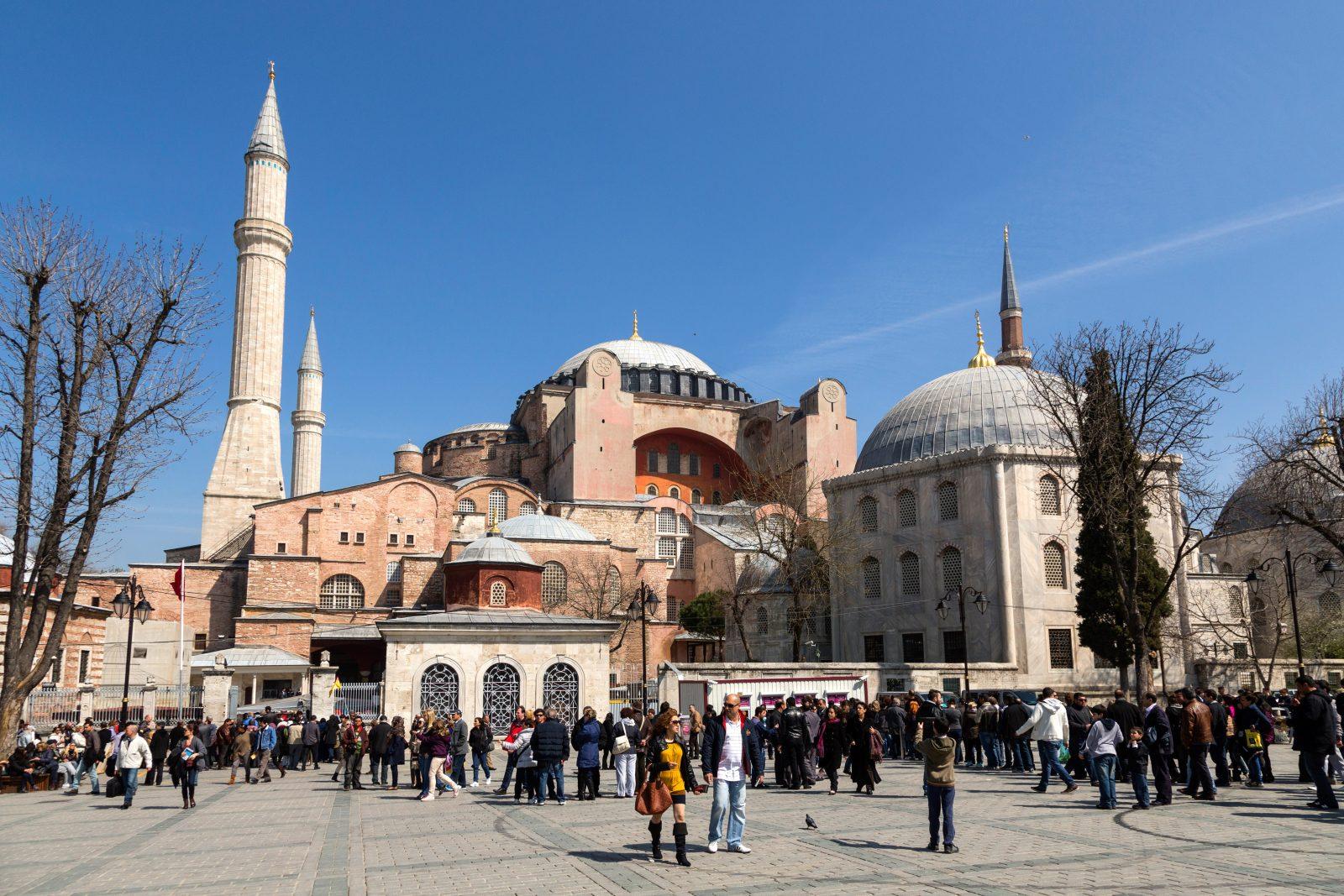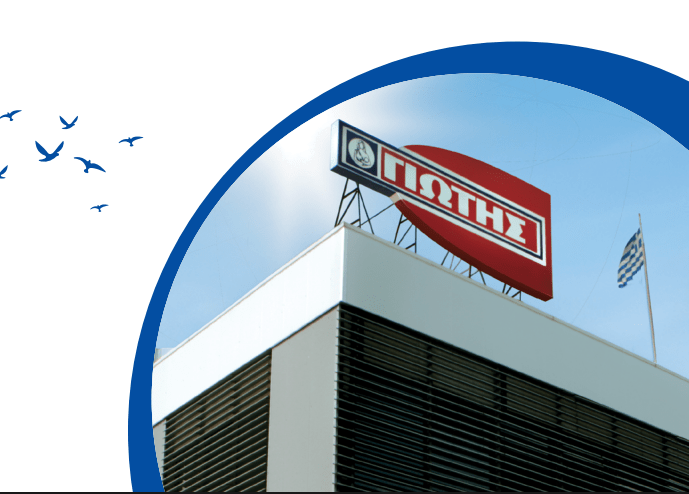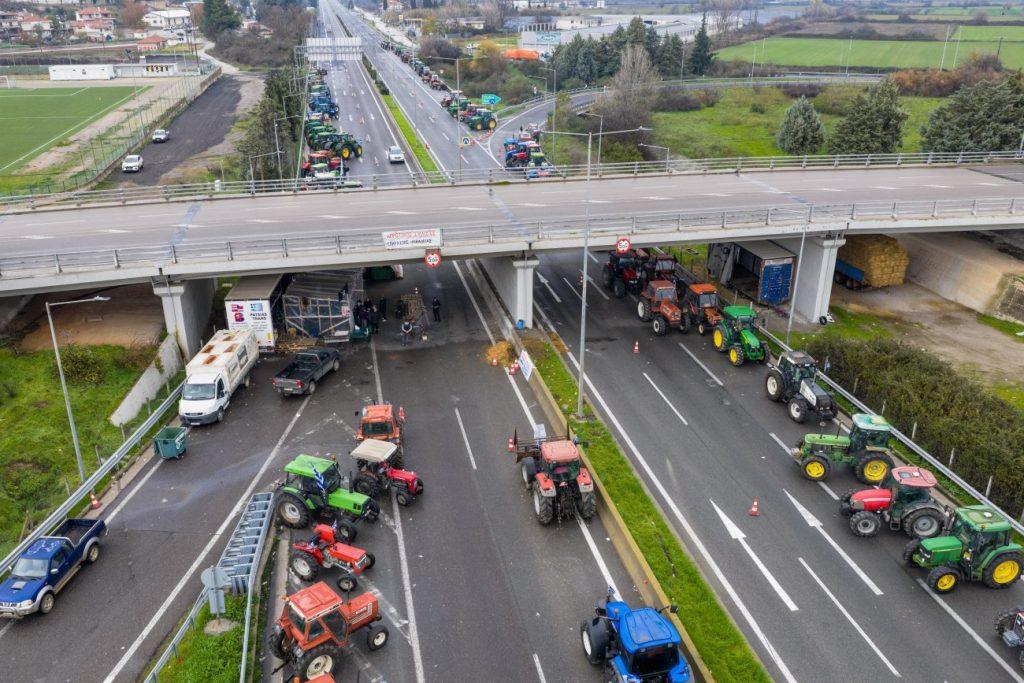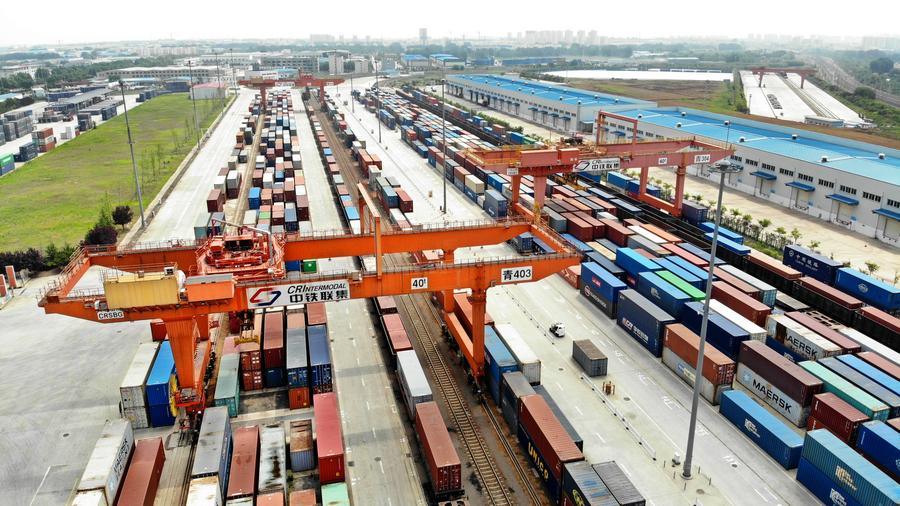Floods are becoming more and more frequent in Attica, given the destruction of forests in the mountains that surround the capital, mainly due to the fact that the anarchic construction of Athens in the 20th century led to the rubble of more than 800 km of watercourses, elsewhere creating roads and elsewhere for construction.
Main streets of the capital such as Vassileos Konstantinou, Kallirrois and Stadiou were created based on the water flows that nature had opened in the basin. From the historical water flows in the capital, Kifissos and a part of Ilissos are the only ones that have remained.
Two rivers that, with the invasion of severe weather system “Ballos”, were inundated once again with huge quantities of water, creating intense concern in the authorities for the possibility of overflow.
What would Athens be like if it was built on the banks of its rivers
All important cities from antiquity, the Middle Ages and until the last century were built on rivers and connected through rivers. Except for Athens, where its rivers were filled up and turned into ugly roads.
Well-known cities such as London, Prague, Cologne, Moscow, Paris, St. Petersburg, Budapest, Vienna, etc., but also so many beautiful unknown cities such as Koblenz, Melk, Uglits, Kizi, Rudesheim and others have been built around their rivers and are a magnet for locals and tourists alike.
According to the website michanikos.gr, the drillings of IGME (Institute of Geological and Mineral Research) proved that most of the streets of Athens hide a muddy stream or an underground river. Ilissos, Eridanus, Cyclovoros, Lykorema, Vourlopotamos, Voidopnichtis, Alassonas are some of them.
According to a study by the Athens Polytechnic, the open streams in 1945 had a length of 1,280 kilometers and today only 434 kilometers, that is, they decreased by 66.4%. As, according to a study by IGME, a few years ago, 80% of rainwater was absorbed by the ground and only 20% fell into the sea, today this percentage has changed dramatically.
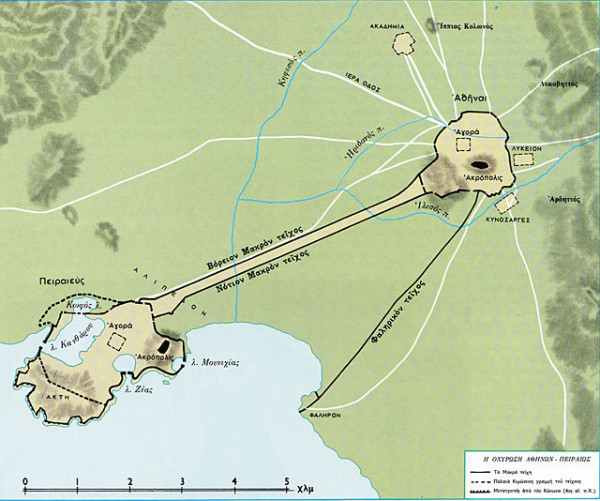
Kifissos, the last lost river of the Attica Basin
Its riverbed stretches over an area of 1200 hectares and its beginning is located in Parnitha, while it passes through at least ten areas of Attica, including Nea Erithraia, Kifissia, Lykovrysi, Metamorfosi and Nea Philadelphia and flows into Faliriko bay, in the Saronic Gulf.
The first references to Kifissos are made by ancient Greek writers, more than 2000 years ago. The river Kifisos was sacred to the ancients, a source of life for the large, fertile plain. Unfortunately, the degradation of Kifissos and its torrents in recent years is one of the most important open environmental fronts in the Basin.
The Agency’s dream for Kifissos:

Absolute indifference
In 1994 the situation in Kifissos was so bad that a presidential decree was issued for its protection. However, 13 years after the Presidential Decree (Government Gazette 632 / 27-6-1994) for the definition of its protection zones, Kifissos remains a typical example of abuse of the natural environment in the long-suffering Attica and especially in its neighboring Municipalities, among which is Nea Philadelphia.
At the same time, the Management and Regeneration Body of Kifissos that was established with a presidential decree (Government Gazette 346/2002), has not been able to effectively exercise its extensive responsibilities, as it was not staffed and the funding provided by law has not been paid to it and consequently it never operated.
It should be noted that new traces from part of the Hadrian’s aqueduct were identified by the members of the Attica ecological excursion in the Kifissos riverbed, at the height of the ILPAP depot in New Philadelphia. At this point, there are three wells and stone structures in a length of about 50 meters. The archeological find has been damaged by rubble and rubbish flying unconsciously from neighboring buildings, while it is also burdened by water diverted from the concrete platform of ILPAP, as recently earthworks and useless materials have been added to the site due to construction.
The reactions of the inhabitants
In 1999 the plans for a road over the river were finalized and a residents’ committee had gone to the ministry to convey its reaction. They met with a competent director, who, to convince them of the necessity of the project, opened a large aerial photograph on a table. He showed them that everything was built – cement everywhere – and the only free area was Kifissos.
“Where do you want the road to go,” he said. There is no other place. ”
So these are the policies we have pursued over the last decade. The “big idea” of the Olympic Games came and the Expressway over Kifissos became part of the big Olympic ring.
You do not need to be an expert to find out that the project is incompatible with the area and has created a lot of problems for the residents. You only need to take a short walk to see this.
Because it had to be connected to the elevated promenade, the road rose above the river, literally rising over two-story buildings.

The microclimate of the area changed
The volume of cement is so large that the microclimate of the area has changed. The sea breeze no longer passes and in summer the temperature is higher. The bulk of the thoroughfare darkened the area and the sun does not shine enough on the suburban houses.
Even the road project in five years has reached its limits.
The traffic jams on the expressway are almost daily, making the problem of noise and the exhaust gas in the lungs of the residents even greater. The noise, the sunless waters under the road, the mosquitoes from the stagnant dark waters, the stench make the life of the inhabitants difficult and the deterioration of the quality of life obvious.
Who destroyed the Ilissos
In the Athens of 1937, the Ilissos River was covered up. The Governor of the Capital (during the dictatorship of Metaxas) Konstantinos Kotzias visited the works of the Ilissos urial. At the beginning of the 20th century, the whole area between Ilissos and Ymittos was declared reforestable and planted.
In the 50’s, during the premiership of Konstantinos Karamanlis, the coverage of the riverbed was completed and it was replaced by Michalakopoulou, Vassileos Konstantinou and Kallirois streets. The project had started in 1939 and was founded by Metaxas with the characteristic phrase: “We are burying Ilissos”.
